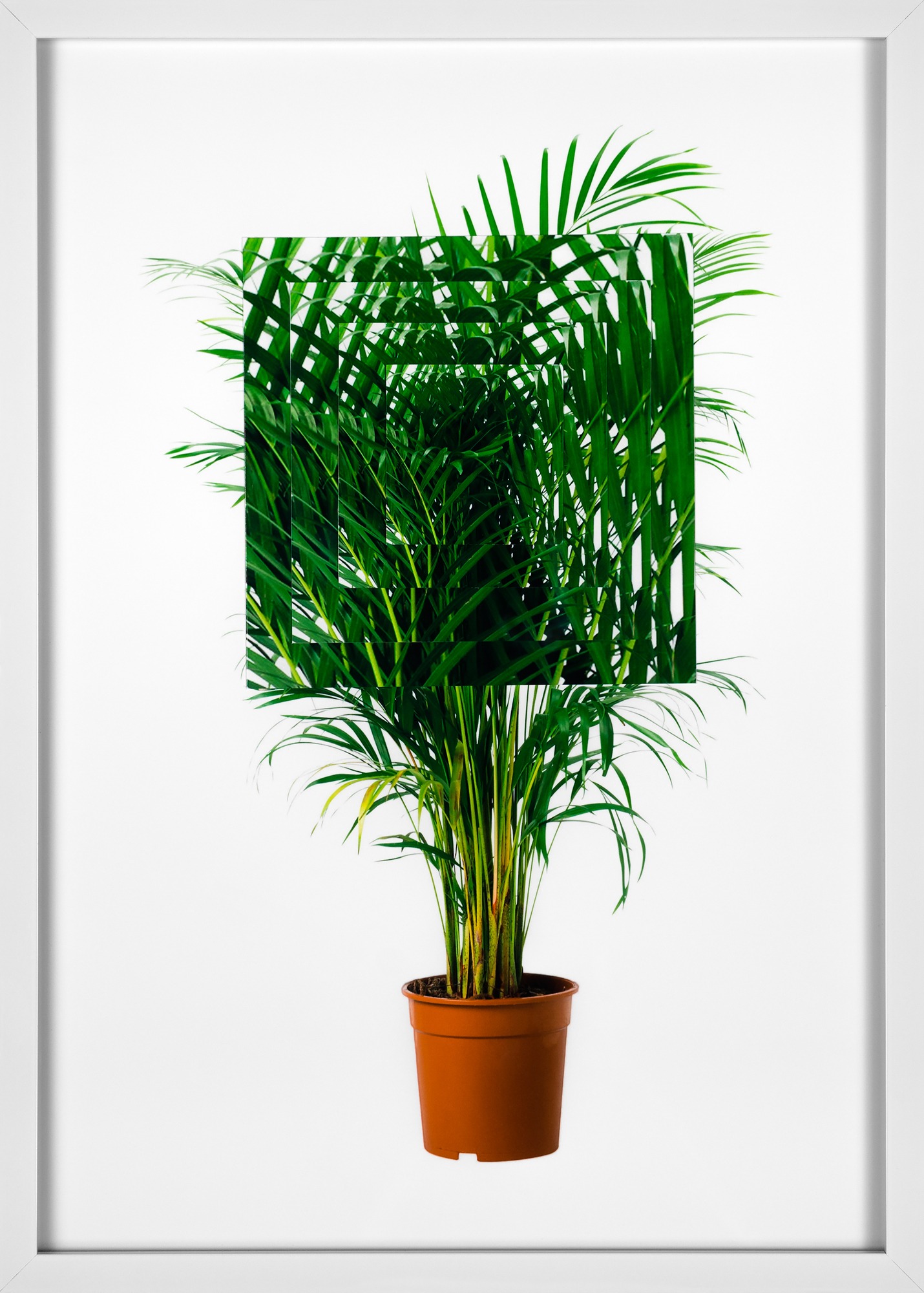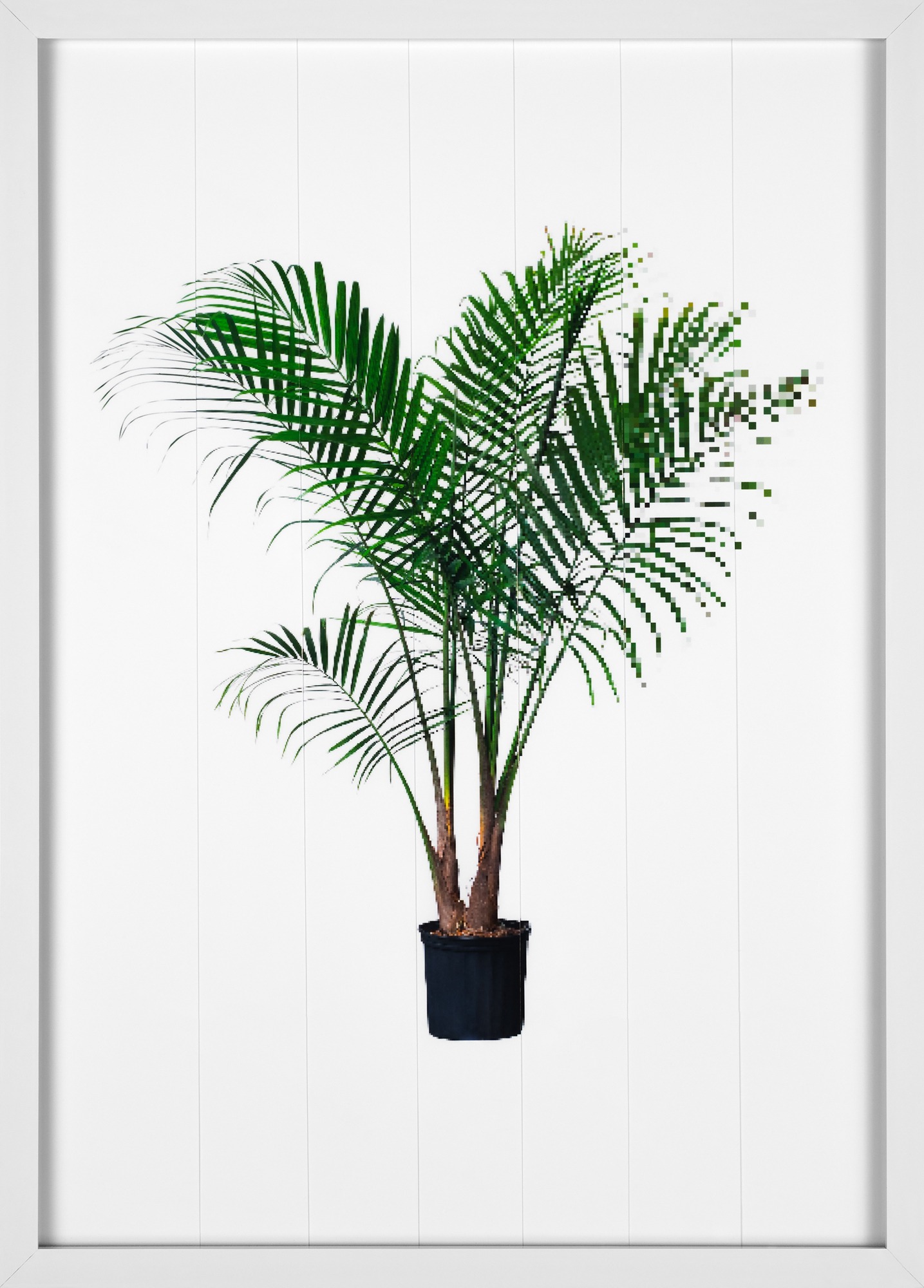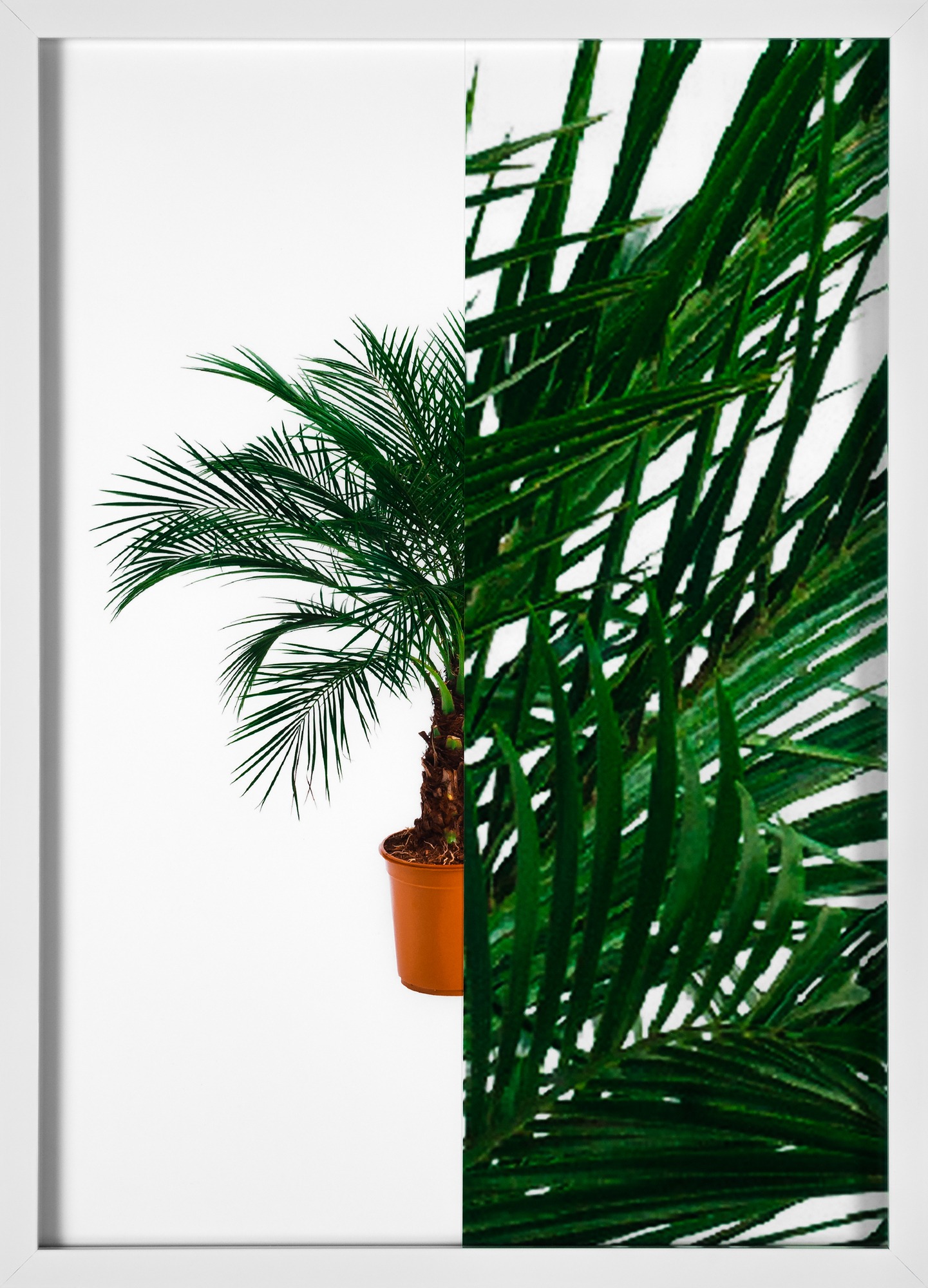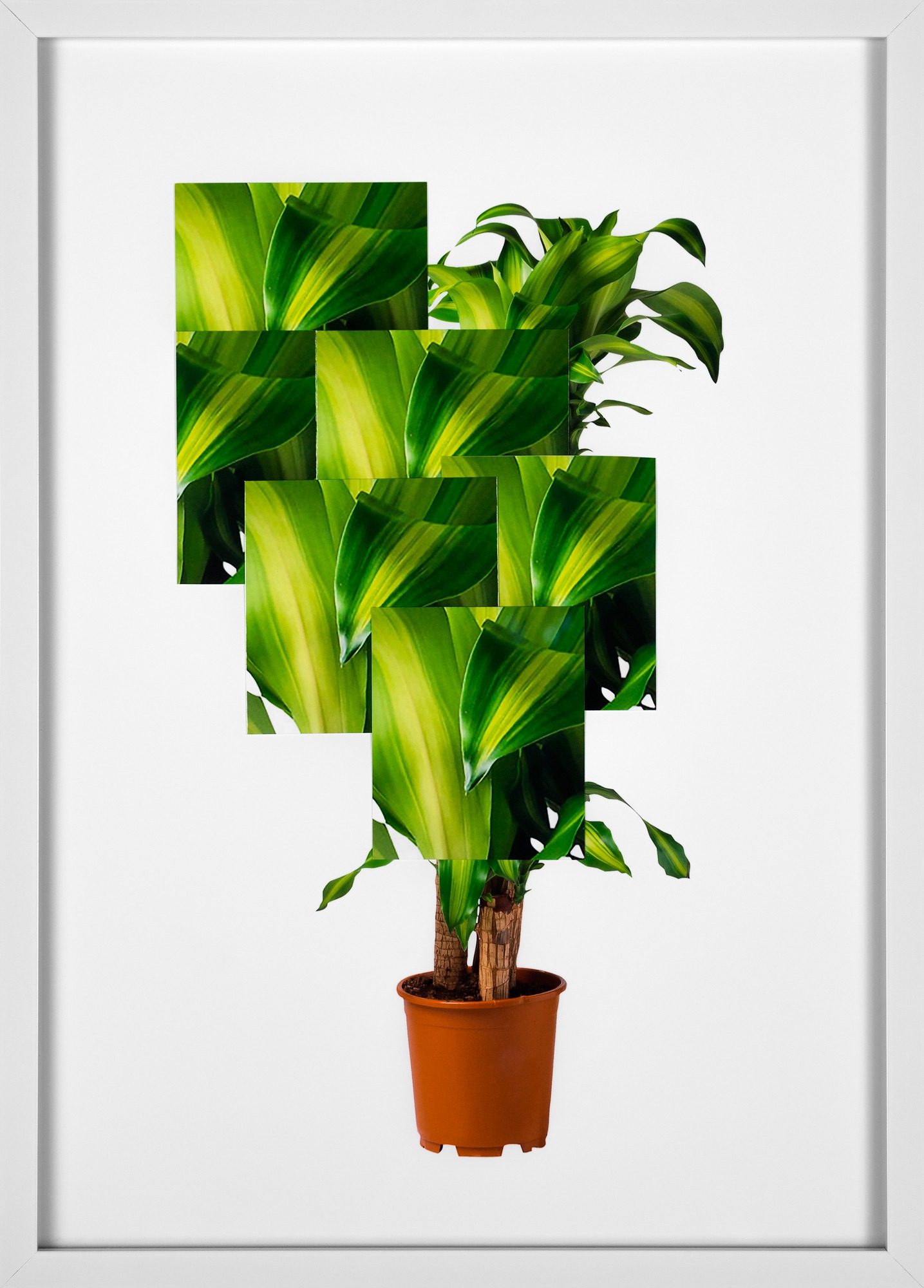







This series of small compositional studies, Pixel Cuts, demonstrate how the distribution of images becomes content in and of itself. The physically stacked inkjet prints within the frame create slight multilayer reliefs, symbolizing ways in which visual information is both cumulative and impressionable. Echoing the organization of imagery in digital spaces by guiding the viewer to specific details, analogous to the design languages of content management systems (CMS) and e-commerce, these implicitly biased frameworks shape understanding and expectations. By reorganizing familiar pictures of plants, data structuring moves to the forefront, underscoring how even seemingly objective images can display signs of calculated mediation.








This series of small compositional studies, Pixel Cuts, demonstrate how the distribution of images becomes content in and of itself. The physically stacked inkjet prints within the frame create slight multilayer reliefs, symbolizing ways in which visual information is both cumulative and impressionable. Echoing the organization of imagery in digital spaces by guiding the viewer to specific details, analogous to the design languages of content management systems (CMS) and e-commerce, these implicitly biased frameworks shape understanding and expectations. By reorganizing familiar pictures of plants, data structuring moves to the forefront, underscoring how even seemingly objective images can display signs of calculated mediation.
[/expander_maker]